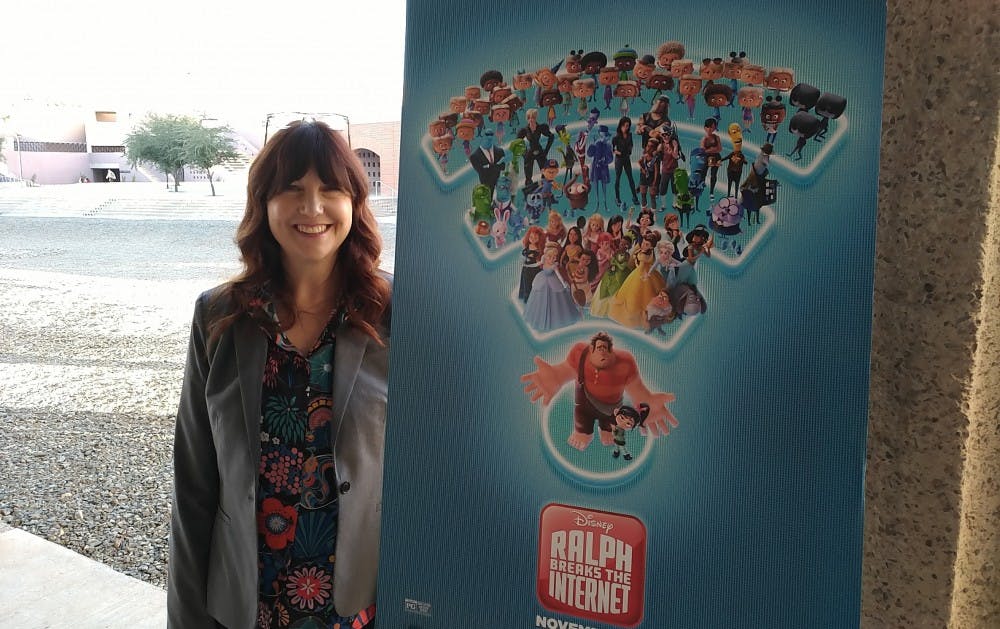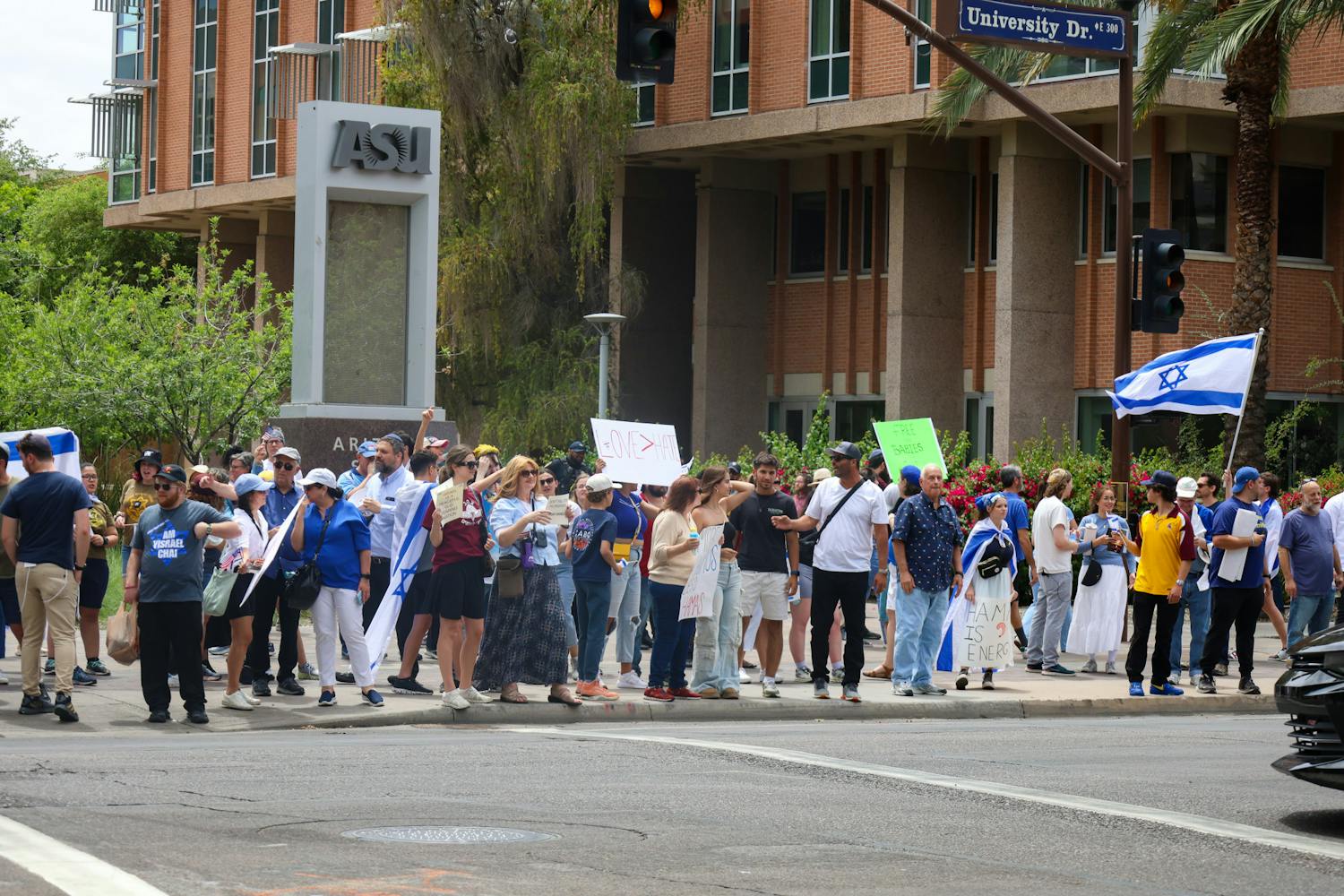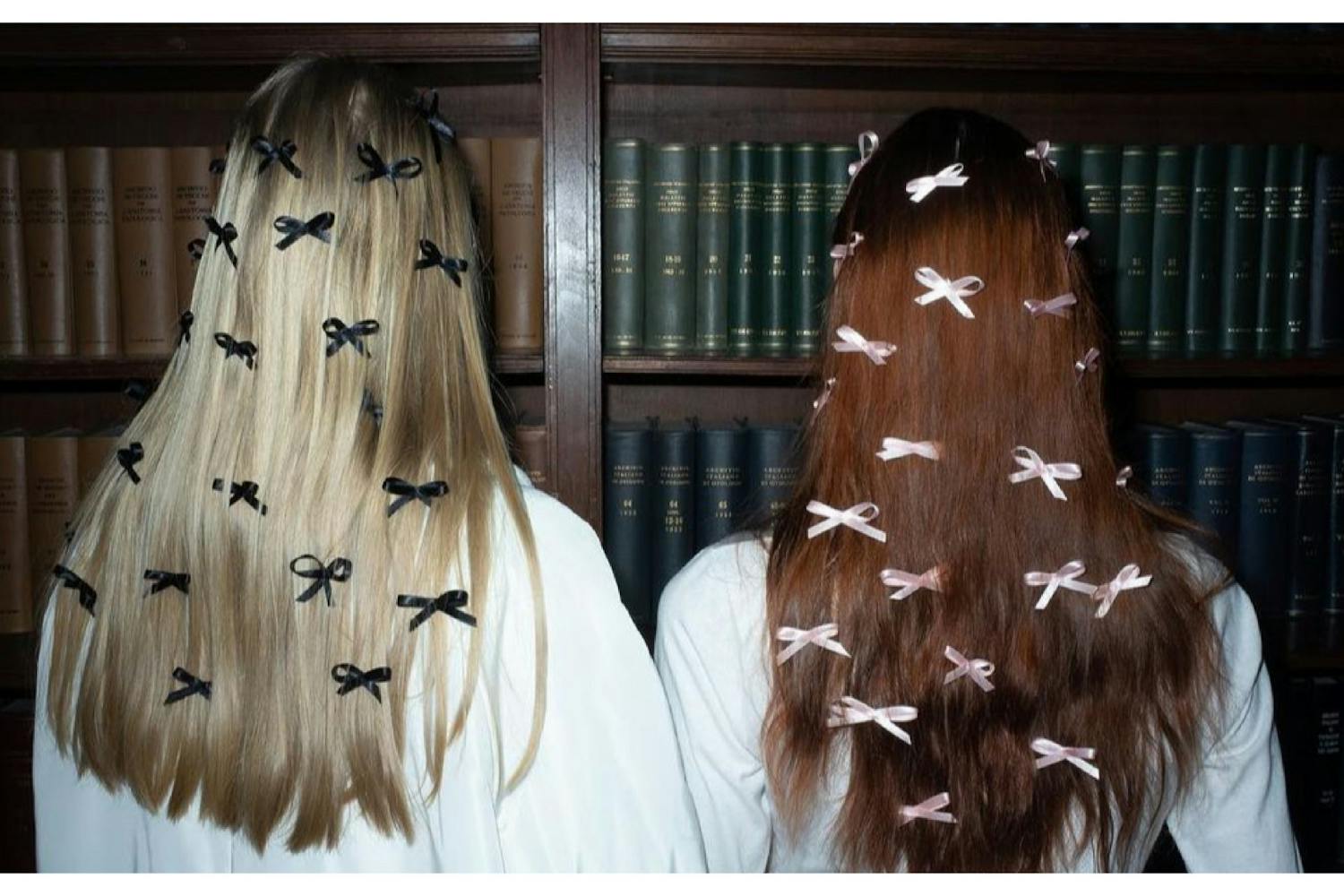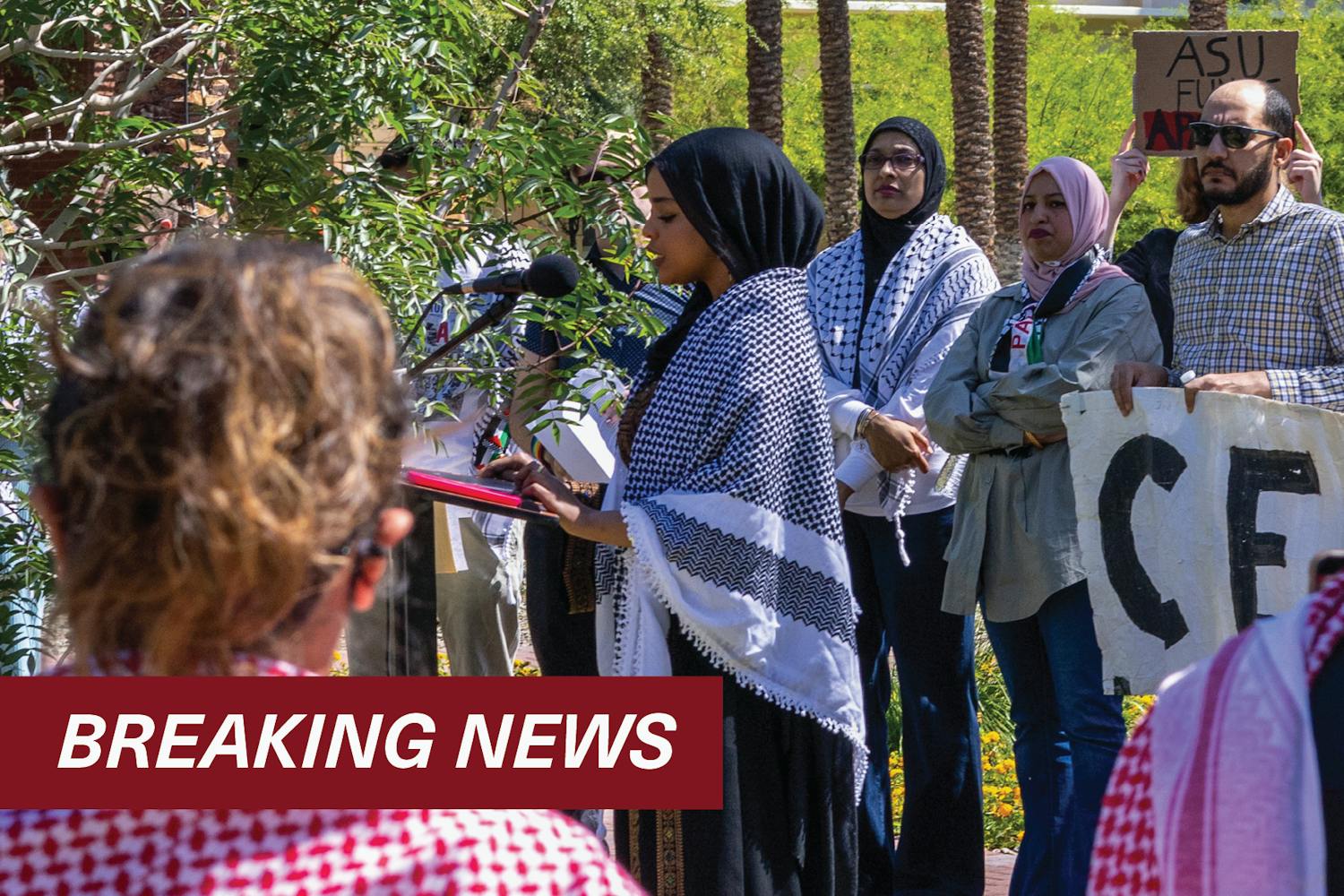Animated movies are made almost entirely of the “movie magic” created by people in the massive animation departments of any given film studio. It’s a long, arduous and technical process that requires work from thousands of people, which means it is always open and hiring the next generation.
“(We are here to) outreach to schools and tell students about us and talk a little bit about the possibilities of what students may be able to do to come work for Disney,” a Disney Animation Studios' look development supervisor Michelle Robinson said.
Robinson, who worked on the upcoming film “Ralph Breaks the Internet,” the sequel to Disney's 2012 film "Wreck-it Ralph," came to ASU to give a presentation to an introductory level film class on Nov. 13.
The presentation focused on the little details of Robinson’s work, the overall processes of working on a large animated film and the aforementioned opportunities and internships available in an animation studio.
She said these opportunities were not limited to film students.
"There's all kinds of ways that students here could come and be a part of what we do," Robinson said. "We have a finance department, marketing department, and we have engineers, scientists, technologists and computer science."
Robinson also showed a few clips from the film, chronicling key scenes throughout the first half of the movie.
Miguel Montanez, a junior interdisciplinary studies students, said that while the presentation seemed propagandistic, he gained valuable information about the processes that go into creating an animated film.
"You get insights into what they're doing that you don't get anywhere else," Montanez said.
After the presentation, the floor was opened to questions from students ranging from practical interests including schedules and how to get a foot in the door, to whether Walt Disney is cryogenically frozen at Disney.
When one student asked Robinson about her favorite film she had worked on, she said the message of “Zootopia” set it apart. She said the messages of all Disney films have an impact on the audience's lives.
"It's entertainment, of course, but it also seems to be a really meaningful thing," she said. "The movies have some kind of message, usually something that we're trying to impart, some kind of emotional core, and it's a really satisfying and doable thing."
Frankie Najera, a junior studying film media production, said having Robinson and other industry professionals visit the class is important regardless of a student's career plans.
“I think it's important for everyone — writers, cinematographers, directors — anyone on set, to see all parts of the process,” Najera said. "That's something that should be really emphasized."
Montanez said the presentation also gave him direction as to what he wants to do in the future.
"The industry itself just wants someone who can both fit in but innovate," Montanez said, "(Robinson) emphasized a need to be able to do the house style but also have something interesting, something different, something new. So it gives me some sort of direction to go in."
Catherine Hartmann, the instructor of the class, said these presentations are extremely valuable for her students.
“They give them that connection between what they're doing in the classroom how what they're doing in the classroom is going to impact their career, direct their career and help them get a career," she said. "And on days like this, it gets to be fun.”
Hartmann said the presentations provides students with information they can use not only in school, but also throughout their careers after they graduate.
"We can give them information, we can put a foundation underneath them, but they take that information and give them a way to apply it in real life," she said.
Reach the reporter at tlhill9@asu.edu and follow @hilltroy99 on Twitter.
Like The State Press on Facebook and follow @statepress on Twitter.




